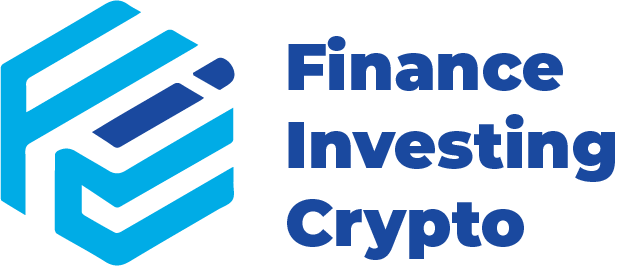Disclosure: The views and opinions expressed here belong solely to the author and do not represent the views and opinions of crypto.news’ editorial.
Gold is moving not just from being a portfolio afterthought, but now towards becoming a policy anchor in sovereign states. Central banks accumulated 3,255 tonnes from 2022-2024, the strongest three-year span since the 1970s, as the very plumbing of the market signals a re-rating of monetary sovereignty. This shift is happening while paper markets display visible fragility.
Summary
- Sovereigns drive demand: Central banks bought over 1,000 tonnes annually since 2022, with China, Turkey, and Poland leading moves toward domestic custody.
- Supply constraints bite: Global mine output plateaued at ~3,661 tonnes in 2024, while refining bottlenecks and illicit flows (435 tonnes smuggled from Africa in 2022) amplify scarcity.
- Tokenization’s promise: With $1.5B in tokenized gold by end-2024, programmable metal offers transparency, accessibility, and resilience in a fragmented financial system.
Remonetization is growing through three forces: official-sector accumulation, structural supply constraints, and a regulatory architecture that diverts flows into shadows. The data assessed in Ubuntu Tribe’s Gold for All report aligns with these trends and offers information on policy implications that investors and builders often ignore.
Sovereigns are voting with their vaults
Official purchases set the rhythm: central banks bought 1,136 tonnes in 2022 and 1,037 tonnes in 2023, and full-year 2024 remained above 1,000 tonnes. The pattern concentrates in countries looking at sanctions insulation and settlement options, and several have mentioned domestic custody.
China, Turkey, and Poland have increased reserves and prioritized domestic custody; Europe’s repatriations moved hundreds of tonnes home to Germany, the Netherlands, Austria, and Poland. This shift reflects a desire for financial autonomy.
Supply is disciplined by geology and time
Against that demand, the gold supply is not just limited; it’s structurally inelastic. World mine output plateaued for years and in 2024 edged to 3,661 tonnes, near previous highs, while the industry still faces decline, rising capex, and elongated permitting cycles.
The average mine now takes roughly 16-18 years to grow from discovery to first metal, which pushes the adjustment horizon past most policy cycles. Recycling helps at the margin, but delivered 1,144 tonnes in 2022, which was about a third of mine’s supply that year. Scarcity is structural.
Legacy producers create the shift. South Africa, once the world’s dominant miner, has slipped to a low share of global output, showing how historic centers no longer control the marginal ounce of gold.
Logistics and refining bottlenecks
What was once a logistics issue is now a monetary vulnerability. Switzerland’s refining complex is still the world’s most critical throughput node and has operated near full capacity as global flows churn. Concentration risk in refining, bar-size standards, and air-cargo constraints now sit on the same policy map as interest-rate differentials.
Compliance frameworks that cut artisanal producers off from banking channels have expanded an illicit circuit. According to a Swissaid report, at least 435 tonnes were smuggled out of Africa in 2022 alone, which accounts for more than 10% of annual global mine output. This creates significant tax losses and risks for producer states.
Stronger standards and better traceability would channel this metal back into transparent markets and reduce the premium on opaque liquidity.
What ‘paper markets’ really mean
Futures, ETFs, and unallocated accounts create price discovery and hedging depth, but they embed layered counterparty risk. While these instruments provide liquidity and risk management tools, they rely on trust in a system many are now reassessing. By December 2024, COMEX open interest totaled 52 million ounces against 3.2 million registered ounces — more than 16 claims for every deliverable ounce. In London, estimates suggest 7–9 claims exist for every bar in the unallocated pool, replicating the mechanics of fractional banking. This counterparty risk vanishes only with allocated delivery.
The more policymakers and treasurers prize assured delivery, the more value accrues to allocated custody and robust redemption mechanics. Recent dislocations made this visible: Shanghai premiums held above $25/oz in Q3 2024 even as COMEX softened, a physical signal overpowering paper quotes.
Monetary policy is absorbing the shock
These structural frictions bleed into rate-setting through balance sheets, collateral practices, and liquidity rules.
First, balance-sheet composition is policy. The composition of reserve assets — from gold to FX — is increasingly a tool of sovereign strategy. Gold’s role as a non-liability reserve is gaining weight in countries navigating sanctions risk and FX volatility. When a quarter or more of annual demand comes from central banks, policy reaction functions begin to reflect the behavior of gold holders as much as dollar bondholders.
Second, logistics rarely appear in the Phillips Curve (the inflation-unemployment trade-off). Refinery bottlenecks and custody frictions can translate into regional premia, collateral haircuts, and funding spreads. Monetary authorities that monitor only headline price indices will miss the microstructure channels through which scarcity tightens financial conditions.
Third, financial plumbing shapes real-economy outcomes. When regulation pushes 10% or more of mine-equivalent supply off the books, AML goals suffer and price signals degrade. Smarter on-ramps for small-scale miners, standardized provenance data, and reciprocal enforcement between hubs would reduce illicit flows without starving legitimate livelihoods.
Tokenization can modernize an old anchor
The reserve community is rediscovering an old truth: assets with no issuer provide the cleanest settlement. The technology community can make that settlement programmable. In an era of cross-border fragmentation and rising custody risks, programmable assets offer both resilience and reach.
Properly structured tokenization (allocated metal, segregated custody, real-time audits, and enforceable redemption) can lift transparency and reduce settlement frictions while preserving gold’s core monetary attributes. For households and smaller institutions, tokenization expands access through smaller denominations and lower minimums.
By the end of 2024, tokenized gold had more than $1.5 billion in assets under management, which was twice as much as the year before. Major standard-setting bodies have started to outline how tokenization can make regulated markets more efficient, interoperable, and feature better governance.
Combining physical assurance and digital verifiability creates a more resilient backbone for cross-border payments, collateral management, and household savings. This is especially apparent in jurisdictions where access to traditional custody is limited. Builders should focus on disclosure, attestation, and settlement finality; policymakers should align on legal title, insolvency remoteness, and supervisory perimeters.
A practical playbook
For sovereigns, the lesson is strategic. Codify a reserve policy that includes non-correlated ballast and secure domestic custody capacity to reduce third-party risk. For institutions, treat gold as working capital for the balance sheet rather than a speculative bet. Optimize for delivery, haircut treatment, and interoperability with payment rails. Institutions should prepare for gold to re-enter capital markets not just as a passive reserve, but as programmable working capital. For households, build documented core reserves through transparent channels with known provenance. For the industry, converge on audit standards, traceability, and reliable delivery to reconnect compliant finance with real supply.
Monetary policy will absorb these realities, whether or not it acknowledges them. The return to gold-standard thinking is an operational response to a world that prizes settlement over promises.










